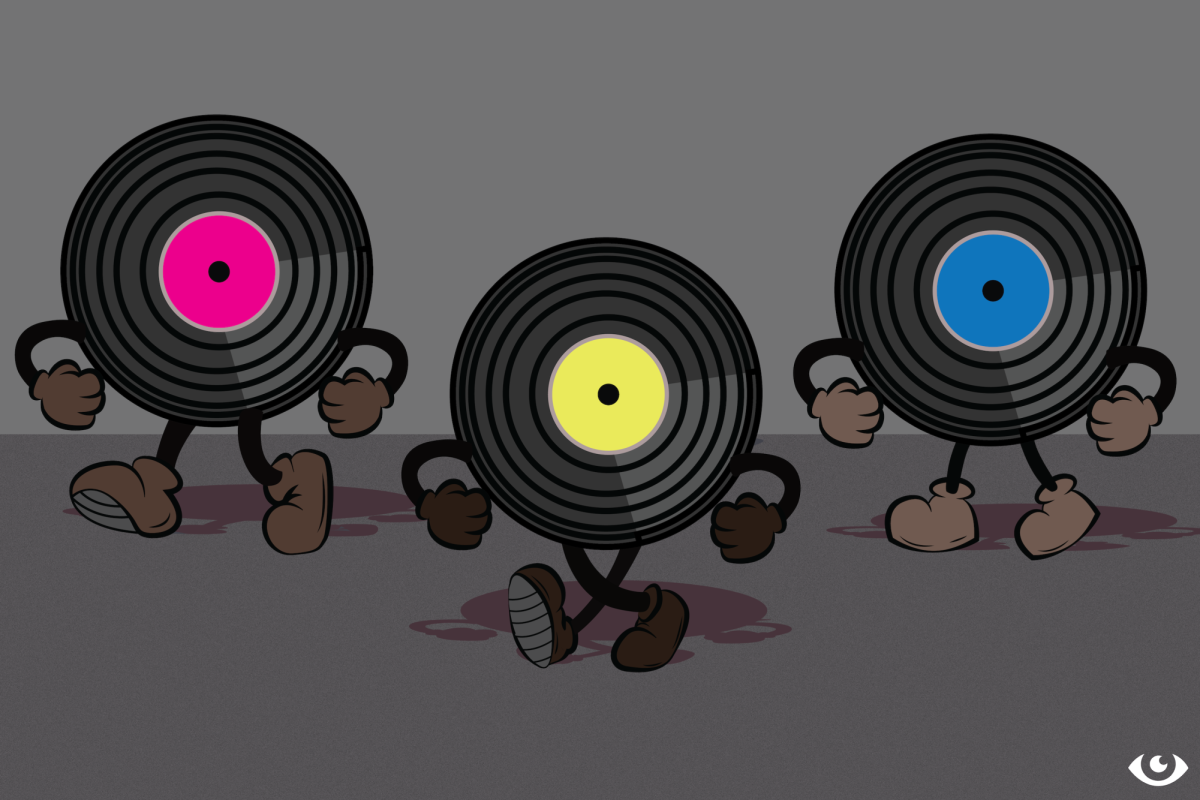Despite Americans’ tendency to idolize sports icons of all races, many black athletes lived through discrimination in the 20th century. Two members of Manual’s staff personally experienced the segregation of the Jim Crow era.
As a member of the 1975 state championship team, one of Manual’s track and field coaches, Ed Burton, felt the hate firsthand. ECE teacher Gary Gray witnessed discrimination against his Black teammates when he was a member of the 1959 track squad.
Back in 1959, Manual’s first integrated track team had accomplished the unthinkable: making it to the state track meet held in Lexington. 17-year-old Gary Gray was exploring the University of Kentucky campus with three of his Black teammates. With his coach’s words echoing fresh in his head — “Do not leave the confines of the University of Kentucky dormitories” — Gray and his teammates decided to leave campus and enjoy lunch at a burger joint across the street.
After walking into the small restaurant and sitting in one of the stiff leather booths, Gray and his teammates passed the time by joking and laughing. But then the waiter approached Gray, planted his finger firmly in Gray’s face, and with narrowed eyes, declared, “I will only serve you and not these other people.”
There was never any question in Mr. Gray’s mind. He got up and left the restaurant with his teammates.
Almost six decades later, Gray is a teacher here at Manual. He has managed to take his passion and love for other people and turn it into a career in which he is constantly dedicating himself to help those who may be less fortunate to still achieve their dreams and goals for the future.
Another Manual alum who experienced the Civil Rights Movement firsthand is 1975 state track champion, Coach Burton.

In his early life, Burton was met with a great deal of hate for being Black.
“I didn’t understand why they hated me so much, I wasn’t a mean person,” said Burton. As he explains it, in that time, people that looked like him weren’t allowed to do much of anything. In one experience as a child, Burton and his family had to stand on a bus for hours because they weren’t allowed to sit.
Facing experiences like this growing up was hard for Burton because it made him question the motive behind this seemingly blind hate, and over time he developed a bitter anger towards the white people who looked down on him for being Black. This anger would not have subsided if it wasn’t for the guidance Burton had from his parents, who made sure Burton saw the positives in the situation and did not respond to hate with hate.
Sports were a major aspect of Burton’s life during his time at Manual. He played a variety of sports including basketball, football, and track. His track career took off when he helped win Manual’s state track championship in 1975.
“Sports were my outlet to prove all the people who talked about how we [African-Americans] were worthless and wrong, so I was angry because all I saw was hate. Sports saved my life,” Burton said.
The life lessons Coach Burton learned through these experiences helped shape him into the man and the coach he is today. He goes out of his way to instill these lessons of hard work, dedication, grit, and team camaraderie into all of the athletes he coaches.
“He [Coach Burton] brings a balance of firm authority and unconditional love that is truly unparalleled. He can always make me laugh at practice and in between classes, while simultaneously making sure I’m wearing an I.D in the halls and my sweats on the track,” Emma Baker (12, HSU) said.
“I think it’s great that he’s a little older and works at the school so we see him every day and feel supported. He also won state and was a really good athlete and this makes for a really good role model,” Emma Kuntz (12, HSU) said.
While the severe historic levels of discrimination that once plagued Louisville and the rest of America have partially subsided, some hate still lurks around the corner. For student athletes who are currently involved with Manual’s track and field program, one thing that is stressed just as much as meeting theirs marks is the idea that the kids in the program aren’t just a team, but a family.
“I believe every individual on the track team has a great enough sense of camaraderie for one another to stand up against any sort of injustice,” Daniel Biggs (10, HSU) said.






